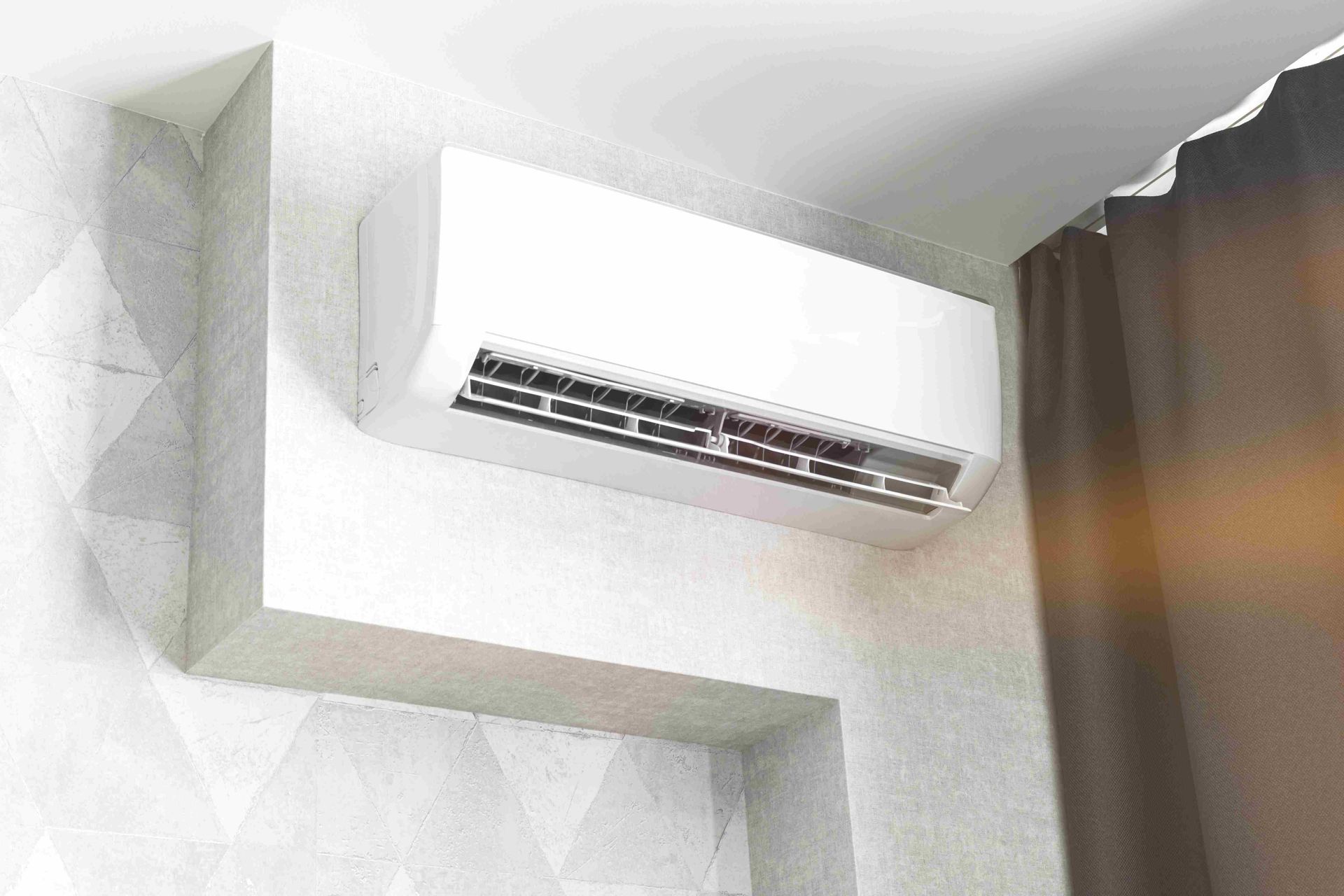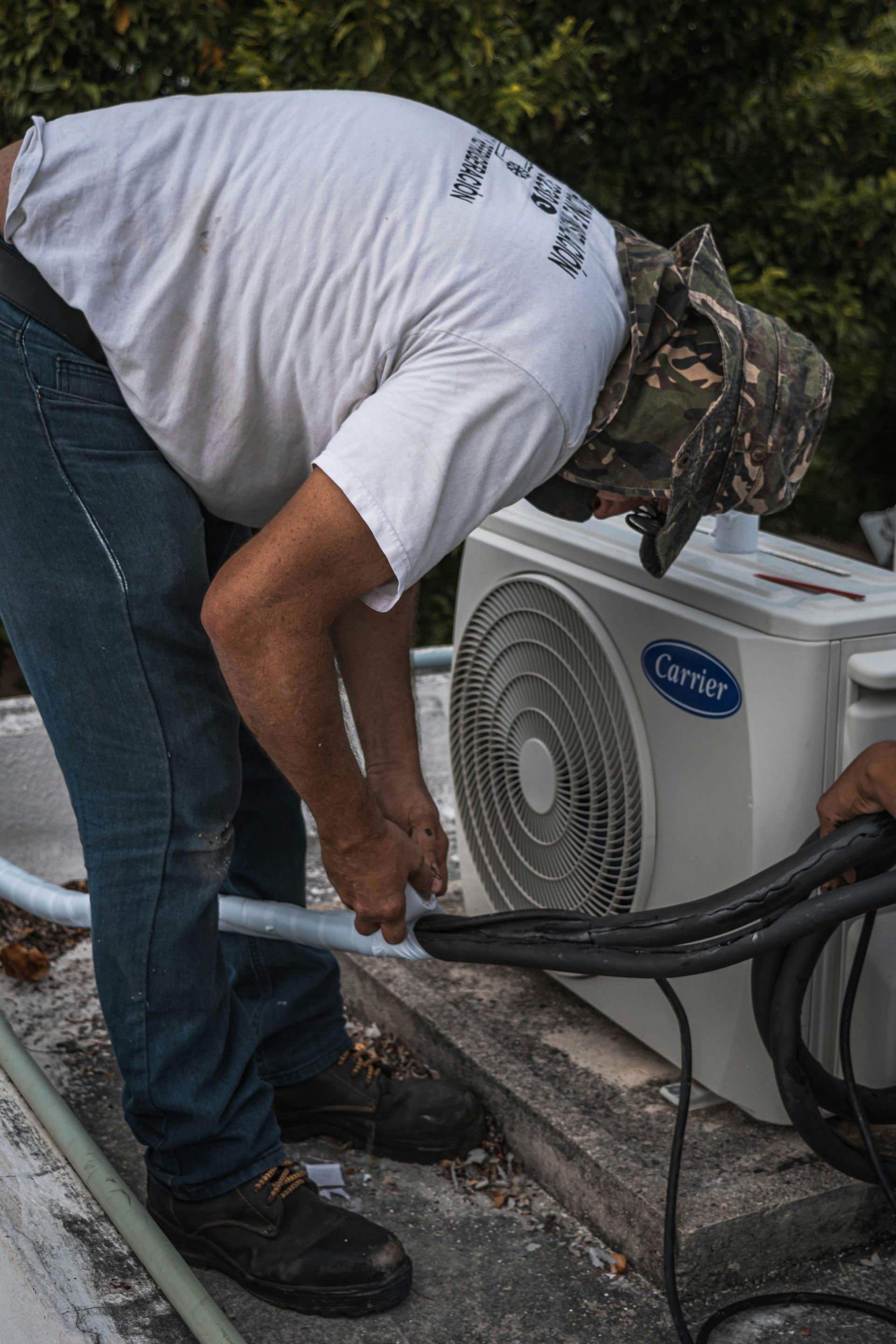Ductless Mini Splits: HVAC Solution for Modern Homes and Buildings
This is a subtitle for your new post

Are you considering upgrading your home's HVAC system? If so, you may have heard about ductless mini split systems. These innovative heating and cooling systems have gained popularity in recent years, thanks to their energy efficiency, versatility, and ease of installation.
In this article, we'll take a closer look at what ductless mini splits are, how they work, and why they may be the right choice for your home.
What Is A Ductless Mini Split?
A ductless mini split, also known as a ductless air conditioner or heat pump, is a type of HVAC (heating, ventilation, and air conditioning) system that doesn't require ductwork to distribute conditioned air throughout a building. Instead, it consists of an outdoor unit and one or more indoor units that are mounted on the wall or ceiling.
The indoor units are connected to the outdoor unit by a conduit, which contains the refrigerant lines, power cables, and drain line.
Ductless mini splits are becoming increasingly popular as an alternative to traditional HVAC systems because they are energy-efficient, easy to install, and allow for more flexibility in terms of zoning and temperature control. They are commonly used in residential and commercial applications, such as in homes, apartments, offices, and small retail spaces.
Additionally, ductless mini splits can provide both heating and cooling, making them a versatile option for climates with both hot summers and cold winters.
Parts Of Ductless A Mini Split
- Outdoor Unit
The outdoor unit of a ductless mini split system contains the compressor, condenser, and fan. It is responsible for releasing heat in cooling mode and absorbing heat in heating mode.
- Indoor Unit
The indoor unit of a ductless mini split system contains the evaporator coil and the fan. It is responsible for blowing cool or warm air into the room, depending on the mode of operation.
- Refrigerant Lines
These lines connect the outdoor and indoor units and transport the refrigerant, which absorbs and releases heat to achieve the desired temperature.
- Drain Line
The drain line carries condensate produced by the evaporator coil out of the indoor unit and outside the building.
- Power Cables
Power cables run from the outdoor unit to the indoor unit and provide the necessary electricity to power the system.
- Remote Control
A remote control is used to adjust the settings on the indoor unit, such as the temperature, fan speed, and mode of operation.
- Line Set Cover
A line set cover is used to conceal the refrigerant lines, drain line, and power cables, creating a clean and streamlined appearance for the system.
Each of these parts plays a crucial role in the operation of a ductless mini split system, allowing it to provide efficient and effective heating and cooling without the need for ductwork. Understanding the various components of a ductless mini split system can help homeowners make informed decisions about their heating and cooling needs and ensure that their system is properly maintained and serviced.
How Does A Ductless Mini Split Work?
A ductless mini split is a type of air conditioning system that consists of an outdoor unit and one or more indoor units. It works by using refrigerant to transfer heat from the indoor units to the outdoor unit, where it is released into the outside air.
Here's how the process works:
The indoor unit contains an evaporator coil and a fan. When you turn on the system, the fan pulls in warm air from the room and blows it over the evaporator coil.
The refrigerant in the evaporator coil absorbs the heat from the warm air, turning it into a gas. The now-cooled air is then blown back into the room.
The refrigerant gas is then transported to the outdoor unit through a small, insulated line that connects the two units. The outdoor unit contains a condenser coil and a compressor.
The compressor pressurizes the refrigerant gas, causing it to become very hot. The hot gas is then sent through the condenser coil, where it releases its heat into the outside air.
The refrigerant cools and condenses back into a liquid and is sent back through the insulated line to the indoor unit.
The cycle then repeats, with the cooled liquid refrigerant absorbing more heat from the room and carrying it outside to be released into the air.
One of the advantages of a ductless mini split is that each indoor unit can be controlled independently, allowing you to set different temperatures in different rooms. It's also easier to install than a traditional ducted system since it doesn't require ductwork to be installed throughout the home.
Why Choose A Ductless Mini Split?
Ductless mini splits offer several advantages over traditional HVAC systems:
Energy Efficiency:
Ductless mini splits are highly energy efficient, with some models achieving SEER ratings of up to 30. This means they can save you a significant amount of money on your energy bills.
Versatility:
Ductless mini splits are ideal for a wide range of applications, from single-room solutions to whole-home installations. They can also be used in commercial settings, such as restaurants, retail stores, and offices.
Easy Installation:
Unlike traditional HVAC systems, which require extensive ductwork, ductless mini splits can be installed quickly and easily. In most cases, the installation process takes just a few hours and does not require any major renovations.
Zoning:
Ductless mini splits allow for precise temperature control in each room or zone, which can lead to increased comfort and energy savings.
Improved Air Quality:
Ductless mini splits use advanced filtration systems to remove dust, allergens, and other pollutants from the air, which can improve indoor air quality and reduce allergy symptoms.
Conclusion
Ductless mini splits are a type of HVAC system that offers energy efficiency, versatility, and ease of installation. These systems consist of an outdoor unit and one or more indoor units that are mounted on the wall or ceiling and are connected by a conduit containing the refrigerant lines, power cables, and drain line.
The various parts of a ductless mini split system work together to provide efficient and effective heating and cooling without the need for ductwork.
Ductless mini splits offer several advantages over traditional HVAC systems, including energy efficiency, versatility, easy installation, zoning, and improved air quality. These systems are becoming increasingly popular for both residential and commercial applications due to their ability to provide both heating and cooling and allow for more flexibility in terms of zoning and temperature control.
By understanding the components and operation of a ductless mini split system, homeowners can make informed decisions about their heating and cooling needs and ensure that their system is properly maintained and serviced.
Want to own or already have a ductless mini-split in your home in London, Ontario? Visit us to enjoy high quality HVAC equipment today.










